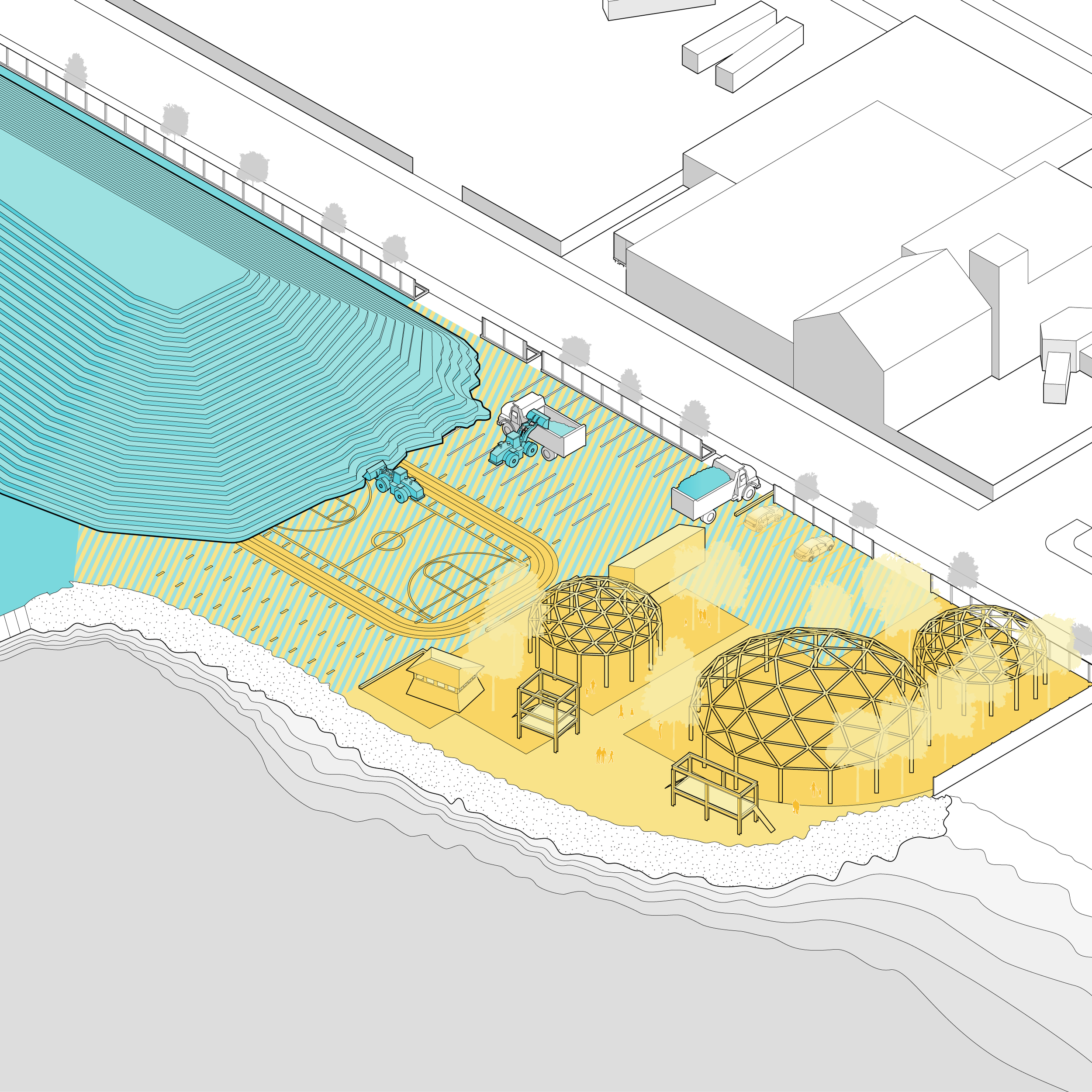
SALT PILE WITH SEASONAL PARK
THE P.O.R.T.
Chelsea, Massachusetts
2006–
Landing Studio
Piggybacking Tactic
Share a Resource to Multiply Use
The P.O.R.T. Park in Chelsea, Massachusetts, spearheaded by Dan Adams and Marie Law Adams of Landing Studio, demonstrates how heavy industry can work alongside the public sector to enhance the public realm amidst the industrial operations of an active waterfront. In the park, public and industrial users navigate the seasonal oscillations of a shifting salt pile. Landing Studio’s design for the park—P.O.R.T. stands for “Publicly Organized / Privately Owned, Recreation Territory”—takes both user groups into account to maximize the opportunities produced by this temporal difference. The salt pile is at its largest in winter when the Massachusetts town’s demand for road salt peaks. When the salt pile retreats in the summer, a multi-use public space is revealed to provide the public with fair-weather access to the waterfront.
The project was the result of years of complex negotiations between the city, the property owner, the industrial operator, and Landing Studio. This raises important practical questions for planners and designers concerning the legal, logistical, and practical demands of piggybacking. Suzanne Lanyi Charles writes of the unusual memorandum of agreement that governs both the design and the operation of the park, claiming that the “project’s programmatic richness could not have been fully realized…if not for the architects’ early involvement in the planning of the project and their collaboration with state agencies, city representatives, local community leaders, and attorneys.” Hybrid projects like P.O.R.T. Park and the backyard grazing scheme demonstrate that planners and designers must develop a wide circle of collaborators and an expanded repertoire of techniques if they are to effectively realize the wide-ranging potential suggested by use-multiplying and resource-sharing piggybackings.


